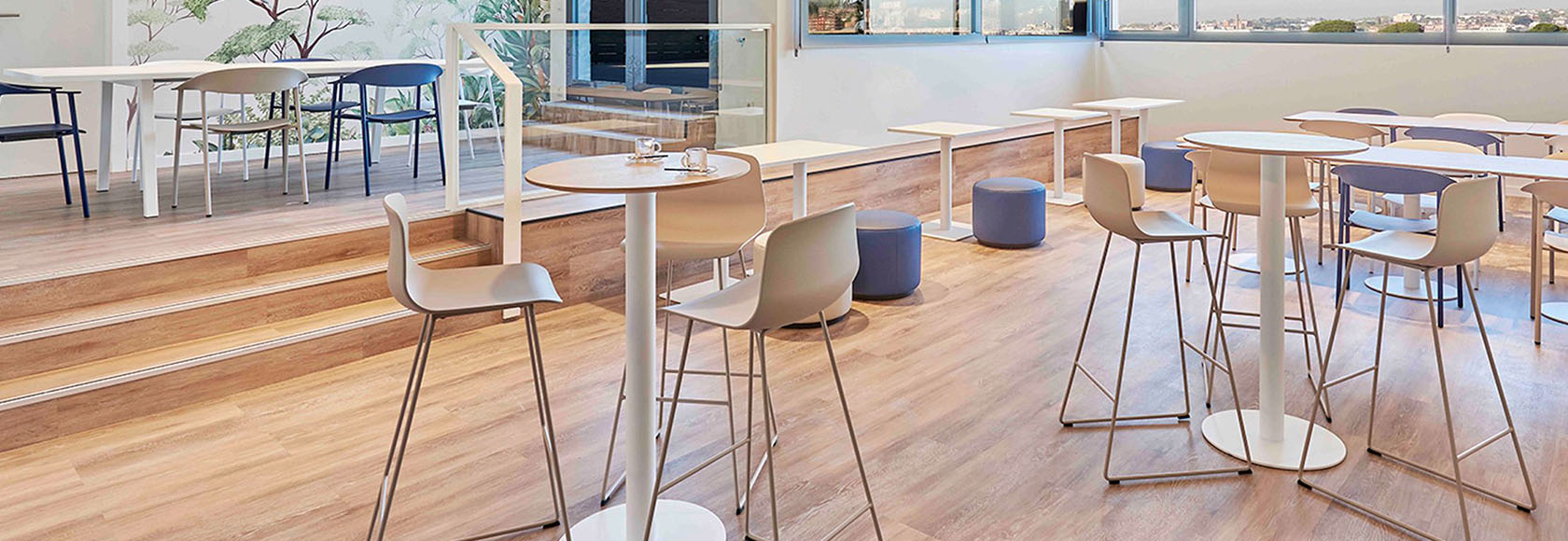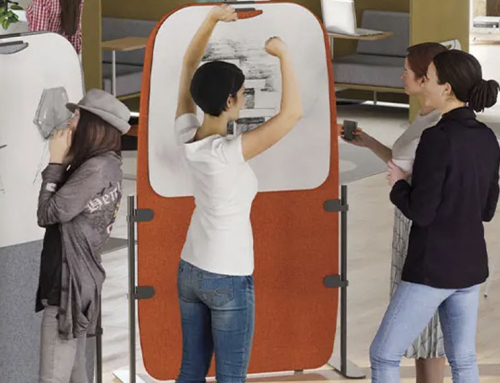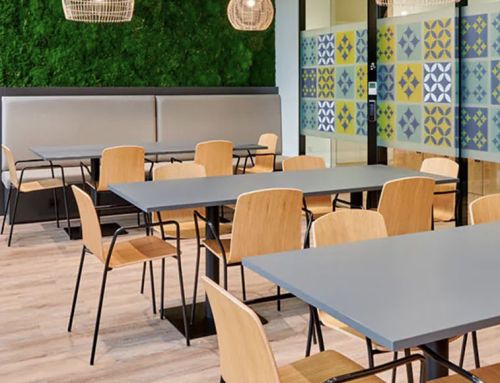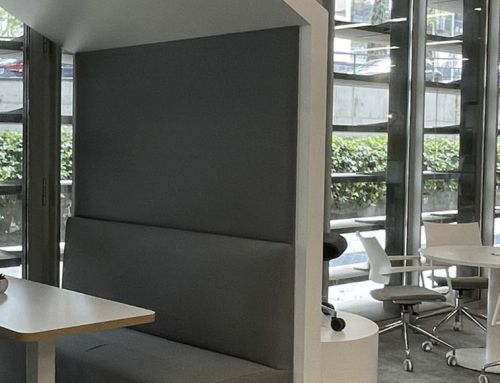Increasing productivity in the office is one of the great challenges facing companies today, especially with the increasingly offshore workforce.
Happy employees are productive employees, and that’s great for business success. So if you want happy workers, start by re-imagining your office and adapting the workspace to what your employees want today.
We all want to work in a space that makes our day-to-day life easier; that when we want to be concentrated we can be quiet and when we want to chat with other colleagues we can converse in a more informal area, in a soft seating area or in the cafeteria.
Open offices of years past do not generate happy employees. In fact, studies show a negative impact on productivity as a result. On the one hand, open offices generate innovation and collaboration, but on the other hand, they are detrimental to employee comfort and productivity. So how do you achieve the best of both worlds in office design?
Hybrid and flexible offices for greater office productivity
The answer lies in hybrid and flexible offices, understood as those in which different spaces coexist, including private, social, leisure, relaxation and innovation areas, and which facilitate different work dynamics: individual, collaborative, face-to-face and/or remote.
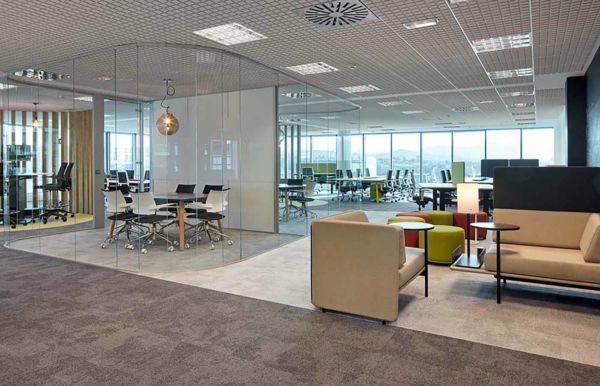
The questions your design should answer are: Is the office convenient for employees? Are the noise levels adequate? If not, do they have somewhere quiet where they can concentrate? Are there enough spaces where they can work collaboratively with others? Does your design motivate and inspire workers? How do you enhance the value of the physical office space when many employees don’t want to come to the office?
Sometimes improving employee happiness is as simple as providing amenities that make their lives easier, from a comfortable chair to a vending machine with healthy food. While a recreation room or yoga room can be great places for employees to bond with their peers or just relax for a few minutes, they are not the only things companies can do.
How design improves productivity in the office
There are some office design improvements that can contribute to employee happiness and thus increase productivity in the office.
What no one doubts anymore is that an adequate workspace increases functionality and reduces health problems due to aspects such as ergonomics, lighting, temperature, noise or air quality.
Here we share some guidelines:
Say yes to versatility by installing adjustable workstations that easily adapt to the desired position so that workers can work standing or sitting.
It provides the office with the right lighting, taking advantage of natural light to create a sense of well-being. Glass partitions, for example, are recommended for this purpose. They generate spaces within the open space to avoid noise interference and privacy, but allow natural light to pass through.
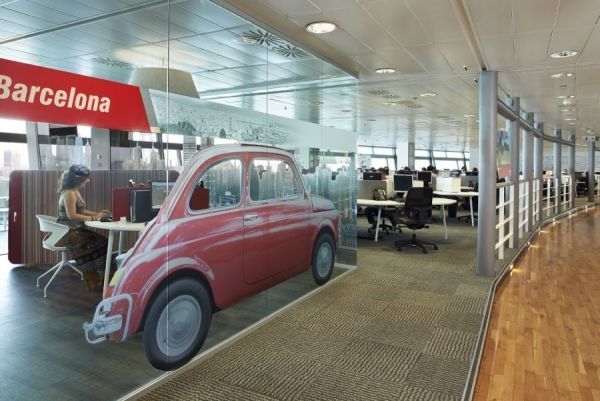
Adapt the office to technology. In recent years, new technologies have been implemented that are changing the way companies carry out their work, and impacting the design of workspaces. For example, there is no longer a need for so many server rooms to store data. Nor is it possible to think of a modern office today without including areas with technology for remote work by part of the team. This also means that companies need less space, since they have part of the workforce working from home.
New technologies are also changing office furniture. For example, lift-up desks are a growing trend.
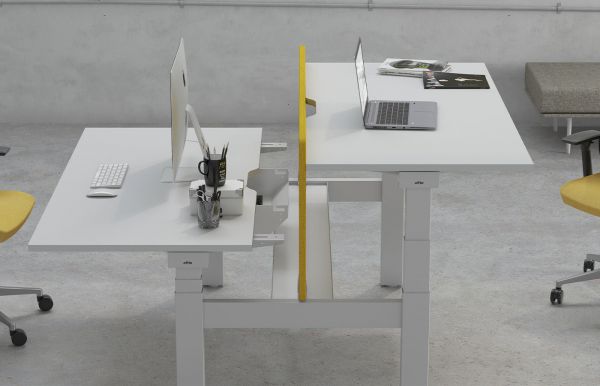
One of the most popular consequences of technology is flexible work. This means that people can work at alternative times and in alternative locations. This allows them greater freedom to work and live wherever they want, accessing and sharing files anytime, anywhere.
This flexibility translates into a better work-life balance, which gives them greater satisfaction.
Avoid noise. The space in which the work is carried out should be isolated as far as possible, without disturbance or noise and with a continuous sound level as low as possible. Productivity drops by more than 65% in a room full of background noise. Fortunately, there are now many solutions on the market that make it possible to create noise-insulated spaces, such as sound-absorbing panels or soundproof booths, a very trendy design that has transformed open spaces.
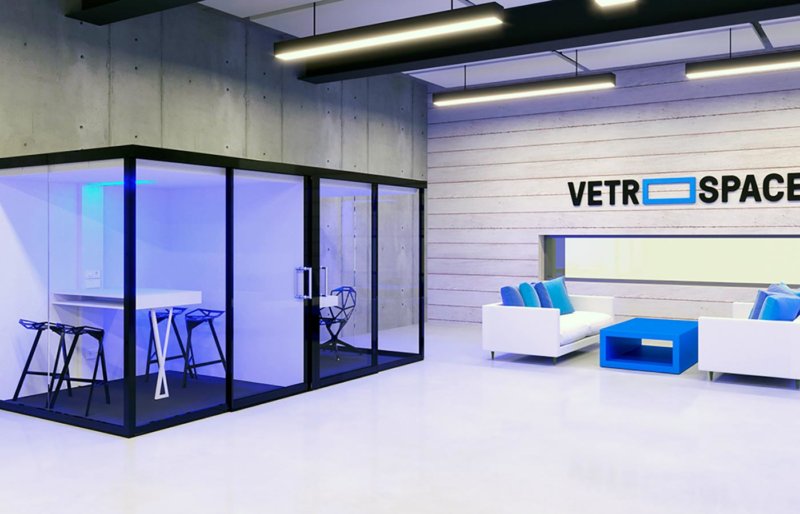
Create collaborative spaces that help employees interact with each other and be more productive, and the more versatile these spaces are the better, so they can be reconfigured for different uses and/or numbers of people.
Provide rest and/or leisure areas where you can recharge your batteries or chat with colleagues. This will help keep staff motivated.
Furnish the office with ergonomic furniture that ensures the comfort of its users and contributes from its design to create healthier workspaces that improve productivity in the office.
Not just any table, chair or lamp will do. Don’t forget the importance of a good design, since the nicer the environment, the better the employees will feel and the better the company’s image will be.
Promotes movement and healthy employee habits. Sometimes simply being able to stand and work simultaneously helps. Or having different spaces within the office for people to move from one to another during their workday, and change postures frequently.
It connects the office with nature, and promotes a sustainable culture, incorporating elements such as eco-design or biophilia in the design and equipment of the office.
In short, office design influences employee happiness… And, happy employees, more productive employees.
